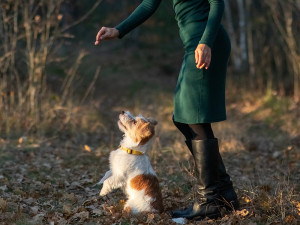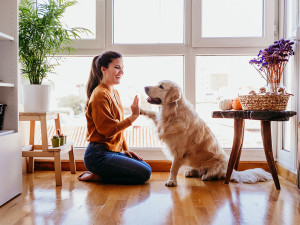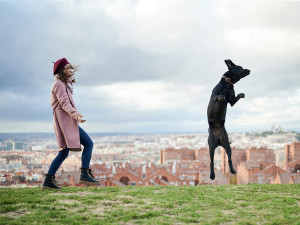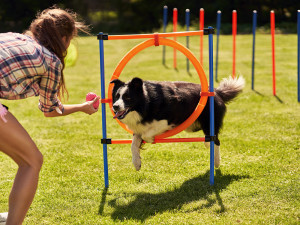How to Teach Your Dog to Skateboard
They’ll be doing ollies in no time.
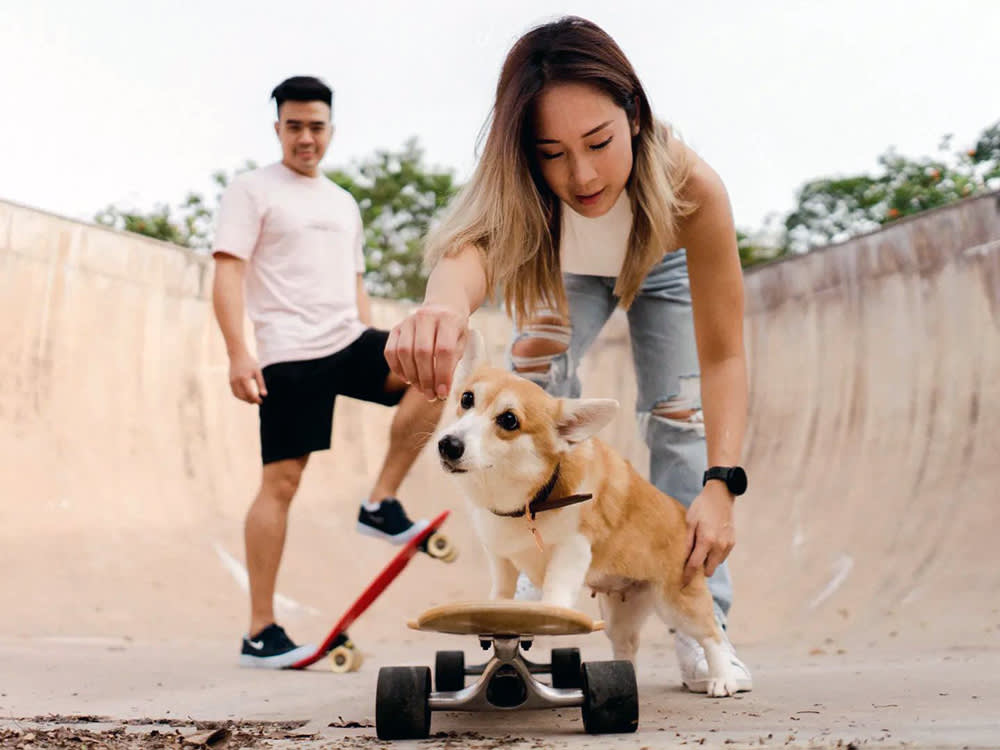
share article

Your pet wants you to read our newsletter. (Then give them a treat.)
There are many tricks you can teach your dog: sit, shake, lie down. But if you really want your pup to shine (or become a TikTok sensation), you’ll teach them to skateboardopens in a new tab. While that may seem cute, if absurd, it’s actually pretty doable. Certain canines, such as Bulldogsopens in a new tab, are naturals when it comes to the sport due to their low centers of gravity. But even larger breedsopens in a new tab (if they can fit on the boards) can be denizens of Dogtown.
All you have to do is familiarize your pet with the unique sensation of standing on the deck, then gently introduce them to movement. The chances are slim that they’ll be doing ollies from there, but they will love the mix of positive reinforcement and breeze in their faces. Meanwhile, you’ll enjoy the satisfaction of sticking it to all other parents at the dog park. Everyone wins!
Five steps to teach your dog to ride a skateboard.
1. Get them comfortable on the board.
This step is critical, and I recommend doing it slowly. Rushing it will slow down your eventual success. Start by rewarding your dog for putting one paw on the board while it is secured with a piece of wood or with your foot acting as a brake. If the board is adjustable, start with the board tightened so it can’t rock back and forth. Ideally, the board shouldn’t move while the dog gets accustomed to it. Later, as your dog gets more comfortable, reward your dog for putting two paws on the board and so forth.
2. Get your dog used to being on the board while moving.
Once your dog is comfortable fully standing on the board with all four paws, the next step is to get them comfortable with the movement. Start by moving the board with your dog comfortably on it just a few inches and then a little bit more at a time. Only allow the board to move slowly. If possible, you should take advantage of opportunities to reinforce your dog for having all four paws on the skateboard and for letting it move with one paw hopping along behind.
3. Next, get your dog comfortable pushing the board.
Reward your dog for pushing the board with one or both back paws. These pushes are critical for having a dog propel the skateboard for any distance rather than just passively riding a board you have set in motion.
4. Gradually increase the speed and the distance.
As your dog picks up the skill and is more comfortable with pushing the board, you’ll work on speed and duration. At this point, you’ll wait longer before reinforcing them. Some dogs may not enjoy the increased speed or riding it for longer periods of time. Stay within your dog’s comfort zone.
5. Loosen the skateboard in stages.
Slowly loosen the board so that it rocks back and forth (necessary for steering) and go through the entire process with the board at each one of these settings. You can then reinforce the dog for steering, which is accomplished by shifting their weight to one side or the other as they ride.
Consider your dog’s skill, physical limitations, and interest level.
The dogs in these videos are very experienced and highly skilled, but few dogs will attain that level of success at skateboarding. Always keep in mind what your dog can comfortably do so that you don’t put them in a situation that is over their head. Stick to smooth surfaces, keep them away from roads and other dangers, and don’t send them down a hill of any kind, no matter how mild, until they’re ready.
Just as in people, some dogs are athletic, fearless, and adventurous enough that skateboarding comes fairly naturally to them. Other dogs may never reach true proficiency at it but might enjoy skateboarding very slowly for brief periods. There are also dogs who are clearly not suited to this activity, and if that’s the case for your dog, do not even consider attempting to teach them to ride.

Karen B. London, PhD, CAAB, CPDT-KA
Karen B. London, Ph.D., is a Certified Applied Animal Behaviorist and Certified Professional Dog Trainer who specializes in working with dogs with serious behavioral issues, including aggression, and has also trained other animals including cats, birds, snakes, and insects. She writes the animal column for the Arizona Daily Sun and is an Adjunct Professor in the Department of Biological Sciences at Northern Arizona University. She is the author of six books about training and behavior, including her most recent, Treat Everyone Like a Dog: How a Dog Trainer’s World View Can Improve Your Lifeopens in a new tab.
Related articles
![Woman in green dress and black boots training her Jack Russell Terrier puppy to spin in a field outside]() opens in a new tab
opens in a new tabTrain Your Dog to Spin With This Guide
Go beyond basic obedience and teach your dog this easy-to-learn trick.
![A woman holding a dogs paw and smiling.]() opens in a new tab
opens in a new tabNine Useful Tricks to Teach Your Dog
Go beyond the basics.
![A dog jumping in the air next to a woman smiling.]() opens in a new tab
opens in a new tabSometimes You Just Gotta Dance — With Your Dog
If your pet’s got moves, canine freestyle is the dog sport you didn’t know you needed.
![Border collie dog and a woman on an agility field]() opens in a new tab
opens in a new tabA Crash Course on Dog Agility Training
5 reasons to get your dog in the agility game, from burning energy to building confidence.
